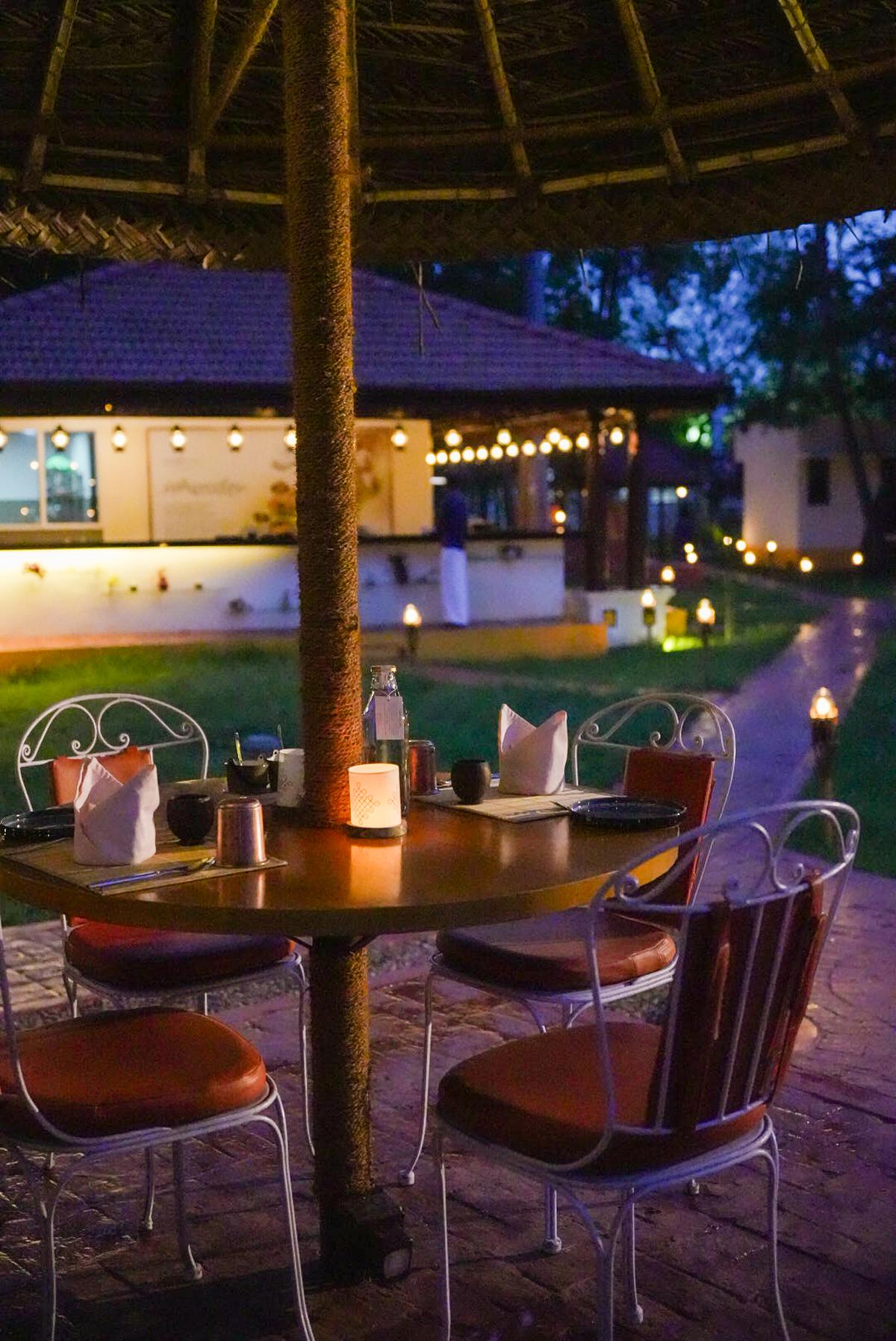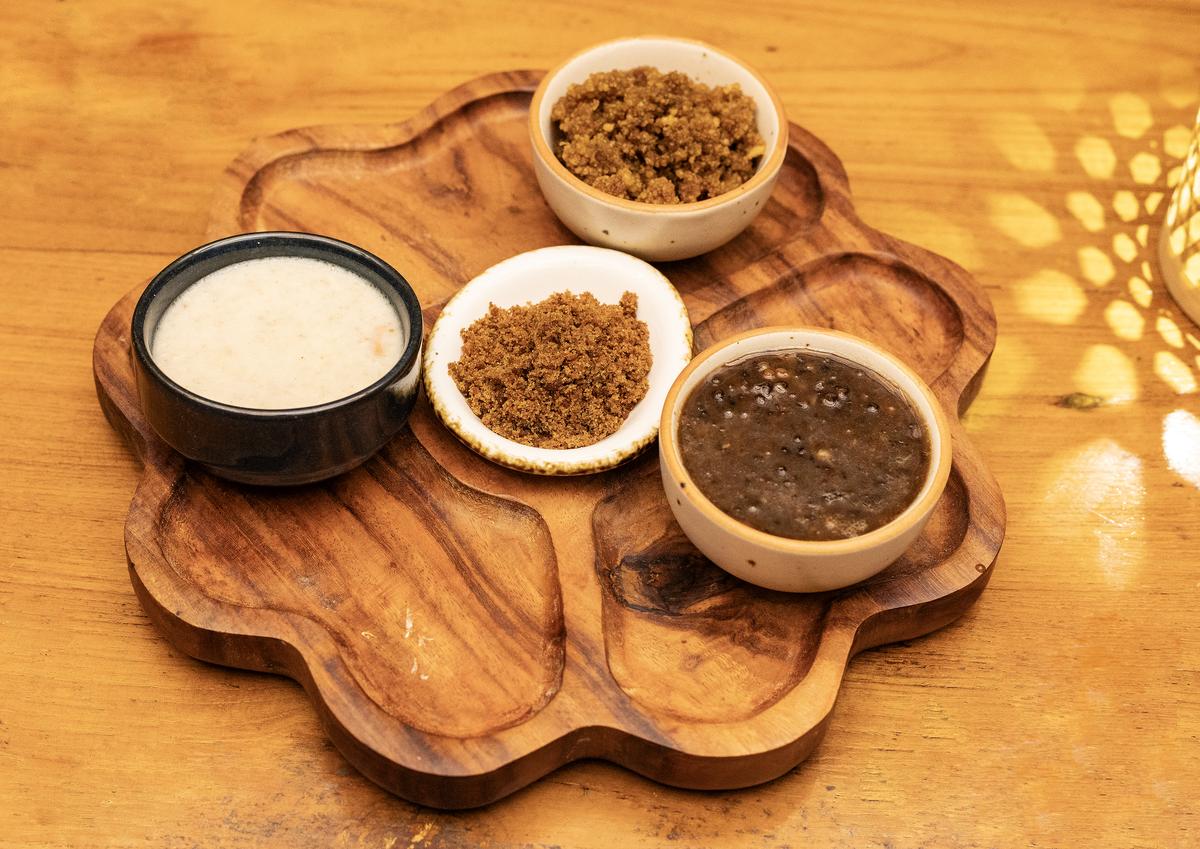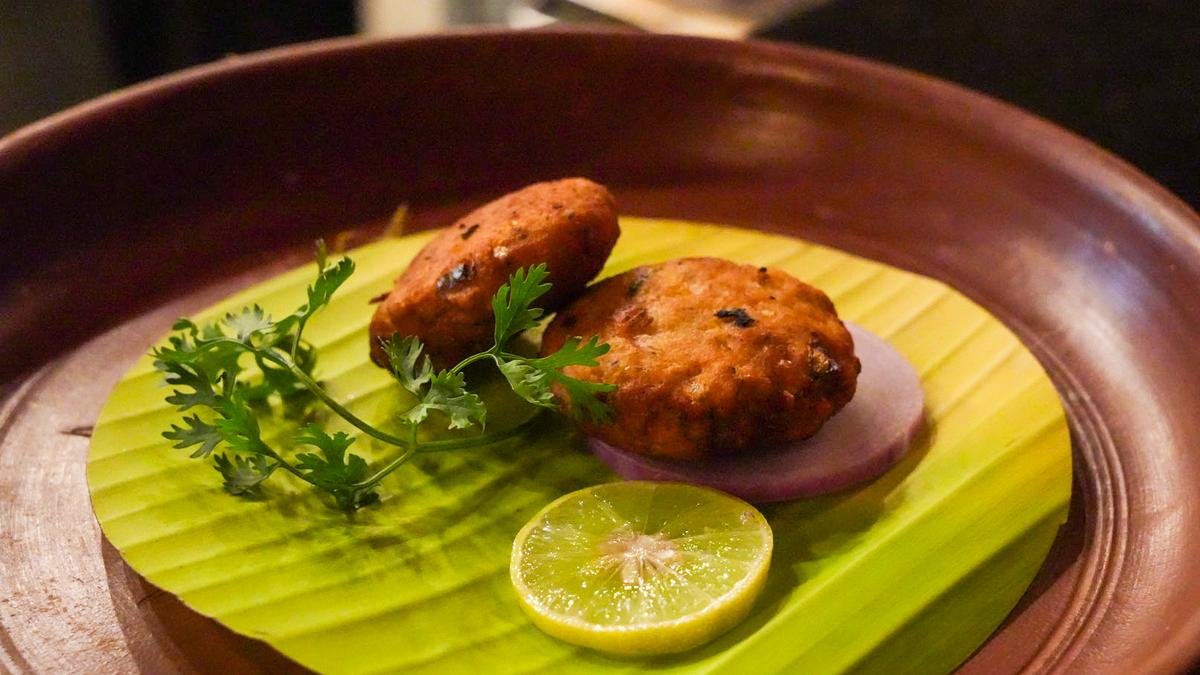The time was the Sangam era. The people of ancient Tamilakam ate what the land offered. Food was mainly grilled and flavoured with ingredients found locally. However, as centuries passed, trade routes opened, and foreign flavours tiptoed into the pantry, ancient traditions slipped out the back door, making space for pillowy idlis and fiery Chettinad gravies. But could they redefine Tamil cuisine?
Curious to discover what his ancestors feasted on, Harish Venkatasubramaniam, resort manager, Mjantra Koodam by CGH Earth in Kumbakonam, turned to the verses of Sangam literature, the oldest surviving body of South Indian text. With Chef Maruthavanan Kumarasamy translating those findings into edible stories, Aatrupaduthal was born. Set beside the river, this dinner experience takes guests on a culinary journey across the five landscapes of Sangam-era Tamilakam.
Culinary Excavation
“When I joined CGH Earth, I was tasked with defining Tamil cuisine,” says Harish, recalling how it began. Coming from a family of Tamil scholars, he instinctively turned to Sangam literature, the collection of ancient Tamil poems once recited at literary gatherings.

A view of the restaurant
| Photo Credit:
Special Arrangement
Penned in old Tamil, the Sangam verses demanded scholarly help for Harish to crack their culinary clues. “It took me more than a year to understand that aambi means mushroom, and kurumpuzhil refers to quail,” he says.
According to Sangam texts, ancient Tamilakam, which included present-day Tamil Nadu, parts of Kerala and Karnataka, was imagined as five ecological landscapes. Kurinji meant the mountains, Mullai, the forests, Marutham, the agricultural plains, Neithal, the coastlines, and Palai the arid stretches. For Harish, it was non-negotiable that each of these terrains find representation on the plate.
To turn these cryptic verses into something edible, Harish teamed up with Chef Maruthavanan, whose past work on Cholanadu cuisine had already shown his knack for weaving history into meals at the same resort. “Food wasn’t the central theme in Sangam literature but love and war were,” Harish explains. “So we had to read between the lines, pick up on mentions of dishes, textures, cooking styles, or what the meal tasted like to develop our dishes.”
They ruled out later imports like chilli and tomato, and leaned on ingredients that were native, like gooseberry, pepper, ginger, shallots, and tamarind. “That’s why we say it’s reimagined,” Harish adds, reflecting on the impossibility of recreating exact recipes and the need to rely on historical context and taste cues woven into the verses.
Sangam Era on a plate
The meal starts with a zesty lemon-pepper salad from Kurinji, made with groundnuts, bottle gourd, and coconut. The mutton liver starter on the meat menu comes with a unique foxtail millet masala. The combination of mushroom, yam, and seeraga samba rice is comforting.
The Mullai region offers a protein-rich adai served with horse gram and garlic sauce. For diners who opt for the meat menu, a smoky charcoal-grilled mutton dish leads the way, followed by a country chicken curry where the meat is marinated and cooked in a garlic-fennel gravy.

Mutton rice as a part of the Marutham course
| Photo Credit:
Special Arrangement
Marutham, introduces a vegetarian starter of stone-grilled country vegetables with the sweetness of liquorice. The dal-and-rice pancake, shallow-fried and served with butter jaggery mix, feels more like a dessert masquerading as a starter. For seafood lovers, a highlight is the grilled crab, a special from the Uzhathiyar WHO ARE THEY women.
As expected, the seafood menu leans heavily on Neithal, the coastal belt. There is squid grilled with local spices, mackerel seasoned in the style of the Thondinagara Neithal women, and tiger prawns stone-grilled with lemon and ginger. Main courses include murrel fish cooked with seeraga samba rice, anchovies in a coconut-based gravy, and angel prawns in a bold pepper-cumin sauce. The only appearance from Neithal on the vegetarian menu is the country vegetables, grilled and flavoured with carom seeds.
Palai might contribute the least to the menu but leaves the biggest impression. The sesame-flavoured quail, fried in ghee, stands out as the star of the course. Following closely is a tender mutton curry, carrying the warming spice of ginger.

A dessert plate
| Photo Credit:
Special Arrangement
Desserts draw their gentle sweetness from jaggery and liquorice. Whether in kodo millet milk halwa, pongal made of black urad dal, steamed moong dal preparation or the foxtail millet payasam, each calls back an era before refined sugar entered the kitchen.
Aatrupaduthal is located inside Mantra Koodam, CGH Earth, Kumbakonam, and is open from 7.30pm to 9.30 pm. The vegetarian meal costs ₹2,000 plus taxes, the meat option is ₹2,500 plus taxes and the seafood meal is at ₹3,000 plus taxes. For reservations, call 7530083613.
Published – September 10, 2025 01:05 pm IST
